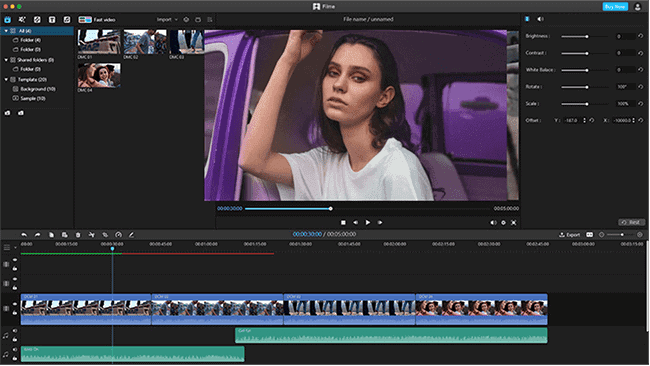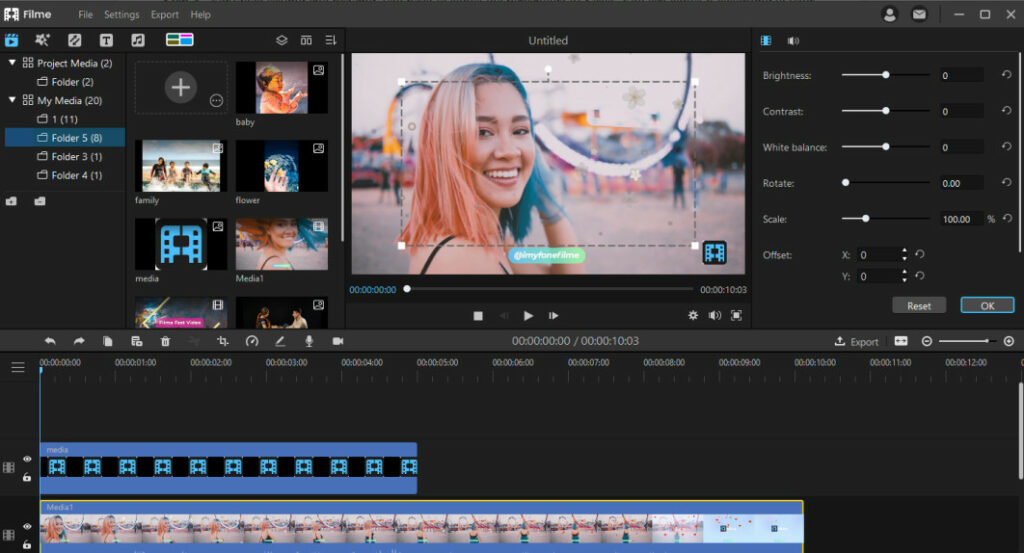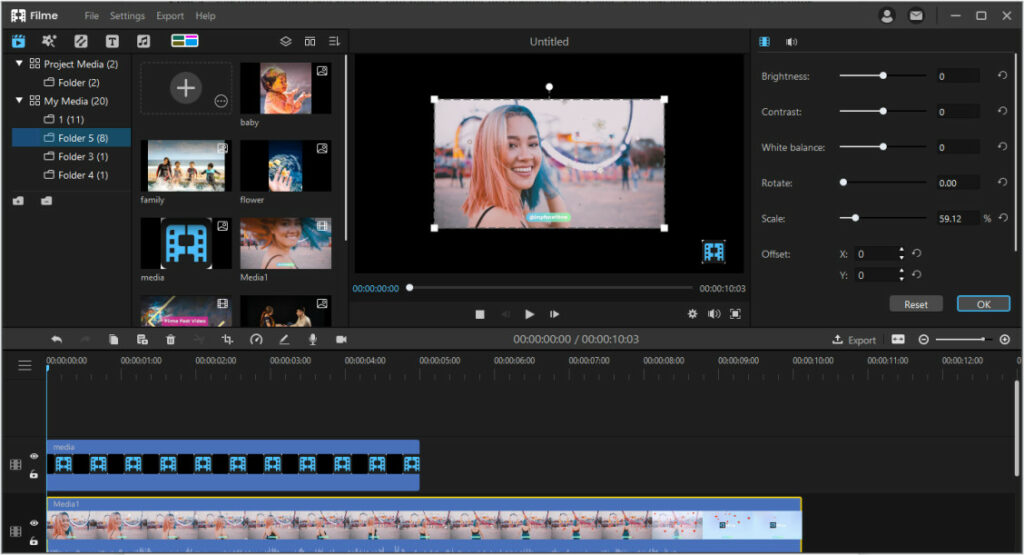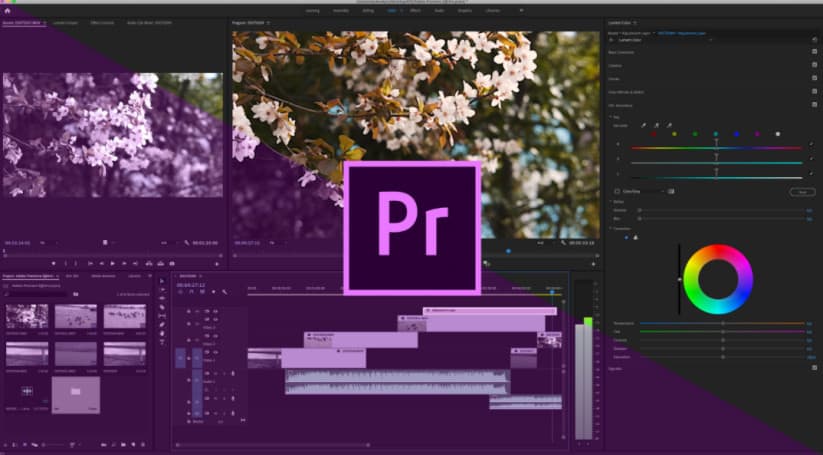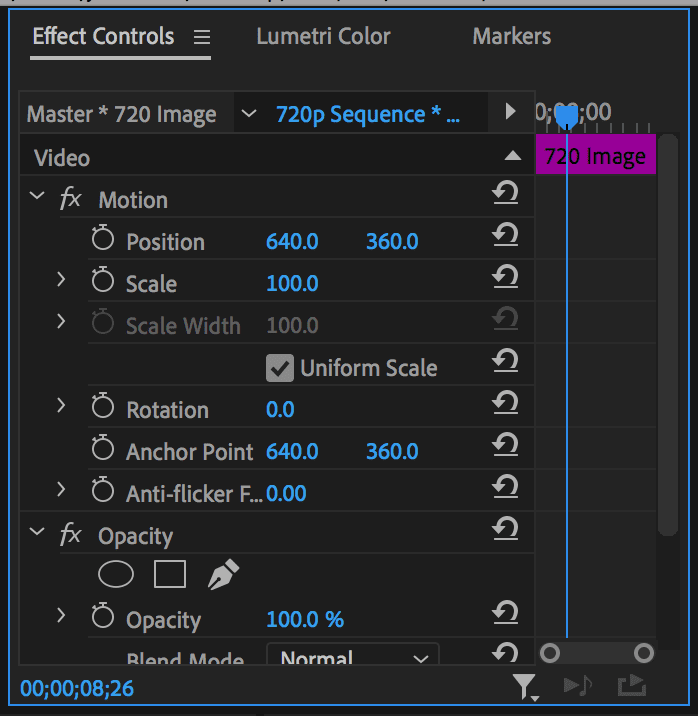
Resizing and scaling video is a crucial part of video-editing. All it requires is a convenient, easy-to-use software that’d make the task simple for hardcore editors. Especially, ABR streaming requires users to switch bitrate-resolutions ranging from 1920px1080p to ABR bitstreams 1280px720.
- FFmpeg
Firstly, we have to look at what input resolution and output resolution means. By using ffprobe tool, shipped from FFmpeg can easily determine the input resolution. The command to do so is:
ffprobe -v error -select_streams v:0 -show_entries stream=width, height -of csv=s=x:p=0 input.mp4
Now, let’s see how we can do the following in FFmpeg:
1) Resize videos in FFmpeg:
Choose the ‘Scale’ filter from the Effects section of FFmpeg. Type the given command to resize videos: FFmpeg -i input.mp4 -vf scale=$w:$h <encoding-parameters> output.mp4
Here, $w & $h indicates the necessary width and height. For example- -vf scale=480p. This way, your video will be resized accordingly.
2) Simple Rescaling:
In order to simply rescale videos, here’s the command you should follow:
FFmpeg -i input.avi -vf scale=320:240 output.avi
3) Keeping the Aspect Ratio:
Maintaining the aspect ratio while changing the resolution is tricky. The aspect ratio is basically the ratio of its width to the height of that image.
For eg- If x unit is the width of the image and y unit is the height, the aspect ratio would be x: y.
When resizing a video & retaining the aspect ratio, we have to set the parameters in an exceedingly particular way i.e, to set either the width or the height to -1.
For example- we set the width to -1 and then set the height and vice versa.
However, there are a few things to take into consideration here in order to alter the resolution whilst keeping the aspect ratio intact-
For example, if we are choosing the resolution of 1920×1080. There are two methods by which the necessary can be done:
- Specify the width-
FFmpeg -i input.mp4 -vf scale=320:-1 output.mp4
The resulting video will have a resolution of 320×180. This occurs because 1920/320 = 6 which equals to 180 pixels.
- Specify the height-
FFmpeg -i input.mp4 -vf scale=-1:720 output.mp4
This results in a resolution of 1280×720. This is because 1080/720= 1.5. Therefore, the width is supposed to be scaled at 1920/1.5= 1280 pixels.
4) Using Variables:
Here, we can apply the same scaling commands by using variables that indicate video parameters work too. However, we need to specify the height and width of the output image.
The height and width of the input video will be denoted by ih and iw respectively.
The command to scale the video’s width two times (2x) is:
FFmpeg -i input.mp4 -vf scale=iw*2:ih output.mp4
If you divide either the height or width by a particular number, the syntax changes a little in this manner; scale=iw/2:ih/2 because the argument needs to be enclosed within double-quotes.
The actual command: FFmpeg -i input.mp4 -vf “scale=iw/2:ih/2” output.mp4
5) Avoiding Upscales:
Every video that has undergone upscaling will not display the exact video quality it did before undergoing the process. Video quality can be ruined here. Videos might also undergo compression losses. In case of very low input resolution, FFmpeg offers a helpful trick to prevent upscaling.
In the following command line, width & height is respectively set to 320&420 pixels.
FFmpeg -i input.mp4 -vf “scale=’min(320,iw)’:’min(240,ih)'” output.mp4
Now that we know how to use the software, let’s glance over its pros & cons:
Pros-
- FFmpeg provides apt codec and filter support.
- It supports all major types of video/audio format.
- Encoders and decoders are welcome in large numbers here.
Cons-
- It isn’t as user-friendly for beginners.
- The accessibility for cross-platform support is limited.
- With official documentation being unclear, the software doesn’t offer audio/video I/O which requires you to have SDKs to proceed.
However, there is an easier alternative for the same to save you the hassle. Especially, if you are a beginner it might be difficult for you to get a hold of this software.
Therefore, here’s introducing you to convenient software:
This software is so user-friendly that beginners can ace using it. Also, it provides professional touch to your videos.
Some of the features of the software are as follows.
- Creates stunning slideshows alongside stunning templates within seconds.
- Easy video-editing without technical knowledge: cut/trim, crop, split, rotate, adjust speed, making picture-in-picture effects, etc.
- Quickly create cinematic titles and text with all types of fonts and colors to choose from.
How to resize/rescale videos on iMyFone Filme?
Step 1 – Open Filme on your computer. Visit the File menu, then New Project, and click on any of the aspect ratios you want.
Step 2 – Then, we need to import the file. To import a video clip, go to the Import option. Click on Import Files. Browse the file and add it to the project. Once you add it to the project, you will see the video clip in My Media.
Step 3 – Drag the video from My Media to the timeline. Double click on the video to see the editing options. You will see the editing options on the right side of the window.
Step 4 – For video scaling and resizing, you need to adjust the percentage of Scale. You can adjust it according to your requirement. The aspect ratio of the video will remain the same. If you want to make the video smaller, reduce the percentage to anything below 100%. You can also enter the desired percentage.
Step 4 (Alternate)- Once you select the video from the timeline, you will notice the borders on the preview video. Drag the corners as much as you want to adjust the size of the video.
Step 5- After resizing, you need to position the video. Position it where you like it to be by dragging the video. You can also enter values in the X and Y coordinates of the Offset property.
Step 6- When you are done, go to the Export menu and click on Export Video. Enter the name, destination, and click on Export.
That was a very convenient option of software for video editors of all kinds.
-
Adobe Premiere Pro–
This is a widely used software by filmmakers and vloggers in today’s date.
- Here is a systematic method to resize videos here:
- Click Effect Controls and find the scale option.
- Right-click on the clip and choose a suitable number for your scaling.
Here is a way to manually scale videos:
- Head to the Effect Controls panel and look under Motion. You will see an option called Scale.
- Next to the Scale, there is a numerical value you can change in order to set the size of your clip within the frame. By default, it is set to a 100, but you can change it according to your wish or have it will disappear entirely.
For any parameter that you change, you are allowed to click the arrow icon next to the values to reset them back to default.
These were the top three suitable software to resize your videos.

